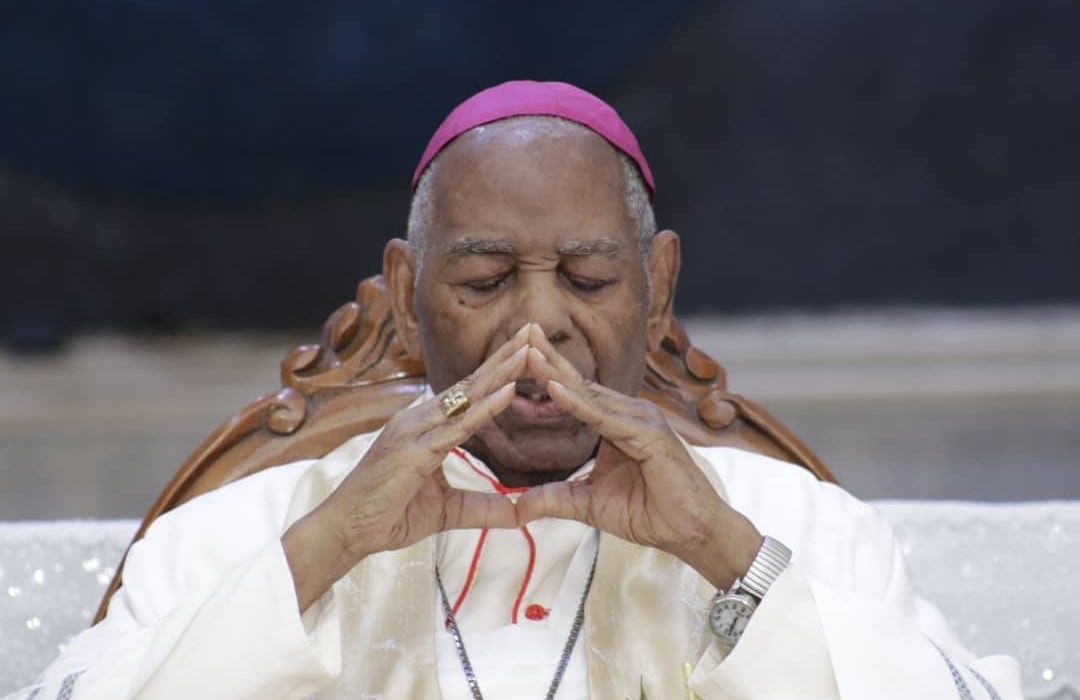As the saying goes, “Uneasy lies the head that wears the crown.” Archbishop Patrick Ebosele Ekpu’s tenure was marked by numerous challenges, which he met with dedication and grace. This work examines some of these challenges.
**Acute Shortage of Clergy**
When Archbishop Ekpu succeeded Bishop Patrick Kelly in 1973, he inherited a vast territory that stretched from Ologbo to Urhonigbe, Igbanke, and down to Agenebode. This expansive region was served by fewer than ten priests. Confronted with an acute shortage of clergy, he embarked on a determined search for young men called to the priesthood. His efforts bore abundant fruit. At a time when the vocations in Church appeared to be in decline, Archbishop Ekpu, much like the Holy Father during the Battle of Lepanto, called on the faithful to pray for vocations, while he actively sought out candidates. By the grace of God, he ordained over 90 indigenous priests before the end of his tenure.
**Nationalization, Indigenization, and Post-Civil War Turmoil**
The federal government’s nationalization policy, combined with the turmoil following Nigeria’s civil war, led to the departure of foreign expatriates. This exodus resulted in a significant shortage of female religious workers, just as the demand for their services was rising. In response, Archbishop Ekpu established the Institute of the Sisters of the Sacred Heart of Jesus in 1975. This initiative was aimed at filling the gap in humanitarian services and supporting the efforts of priests. This Institute remains one of the first Generation Female Religious Institutes in Nigeria.
**The Quest for Lay Support**
As time passed, it became clear that a strong body of lay faithful was necessary to assist priests in the work of evangelization. Archbishop Ekpu initially sought to introduce the foreign Knighthood Order of St. Gregory to Nigeria but faced obstacles. Undeterred, he founded the Knighthood Order of St. Paul to support evangelization efforts and ensure continuous spiritual guidance. This was how the first indigenous Knighthood Order in Nigeria was birthed by the visionary +Patrick Ekpu.
**Prolonged Mass Celebrations**
As Archbishop Ekpu gradually eliminated idolatry and established Catholicism as a vibrant practice, the growing number of communicants began to cause delays in the celebration of Masses. He addressed this issue by training men of proven character as Extraordinary Eucharistic Ministers and volunteer catechists. This initiative streamlined the distribution of Holy Communion, reduced the duration of Masses, and enhanced the overall spiritual experience.
**Disparities Between Urban and Rural Priests**
Noticing the disparities between priests serving in urban centres and those in rural areas, as well as the inequities faced by other Church workers, Archbishop Ekpu was among the first Bishops to develop what is now known as the Central Funding System. This system ensured equitable support for Church workers across the archdiocese.
**Limited Access to Chrism Mass**
During Archbishop Ekpu’s tenure, it was common for many dioceses in Nigeria to hold only a single Chrism Mass. Recognizing the vastness of his diocese, he decentralized these celebrations, making it easier for priests and lay faithful across the territory to participate in this sacred ritual without undue hardship. Providentially, these centres for Chrism Masses later became dioceses.
**Need for Expert Advisors and Collaborators**
As the diocese grew in faith and numbers, the need for specialized expertise became increasingly pressing. To address this, Archbishop Ekpu, following the example of Jesus Christ, sent priests for further studies in pairs to some of the world’s top universities. This initiative led to the emergence of numerous priest-professors serving in several formation houses and universities today across the world.
**Empowering the Laity**
Recognizing that the lay faithful constituted over ninety percent of the Church’s members, Archbishop Ekpu prioritized their empowerment. He implemented formation programmes to deepen their understanding of the Church and encourage active participation. He also established theological institutes to support this initiative, fostering a more informed and engaged laity.
**Accommodation for Visitors and Diocesan Gatherings**
To address the shortage of accommodations for visitors and diocesan gatherings, Archbishop Ekpu constructed the Pastoral Centre, named after his predecessor, Bishop Kelly. This facility provided a conducive environment for spiritual retreats, workshops, and other gatherings.
**Retirement Haven for Clergy**
Foreseeing the future needs of his priests, Archbishop Ekpu established Nigeria’s premier retirement home for clergy. Located near the pastoral center, this facility allowed active priests to easily visit their retired colleagues, who could choose whether or not to reside there.
Archbishop Ekpu, a man of integrity and dignity, also addressed numerous other challenges, such as the construction of model schools throughout the diocese to provide quality education to the youth, these schools today like Lumen Christi and Presentation, are of international renown, he upgraded the hospital facilities, including the establishment of midwifery schools, to combat high maternal mortality rates. He confronted headlong the some of the barbarities that were present in Edo Cultures and work for their abolition or reformation. To rekindle the spirit of contemplation and reflections, he welcomed into the diocese the Benedictine monastic Order.
Archbishop Ekpu’s episcopate spanned 33 years of active service and 18 years of retirement. His tenure was marked by challenges that he confronted with unwavering resolve. The challenges discussed here are merely a glimpse into his legacy, a story that began long before my own time. This piece seeks to affirm that Archbishop Patrick Ebosele Ekpu was a Bishop undeterred by challenges, a priest of deep commitment who approached his ministry with strategic foresight.
Tomorrow, I shall address some of the questions raised in yesterday’s write-up.
Thank you for reading, and special thanks to the author of this piece,
*Fr. Okhueleigbe Osemhantie Amos*
August 13, 2024.

